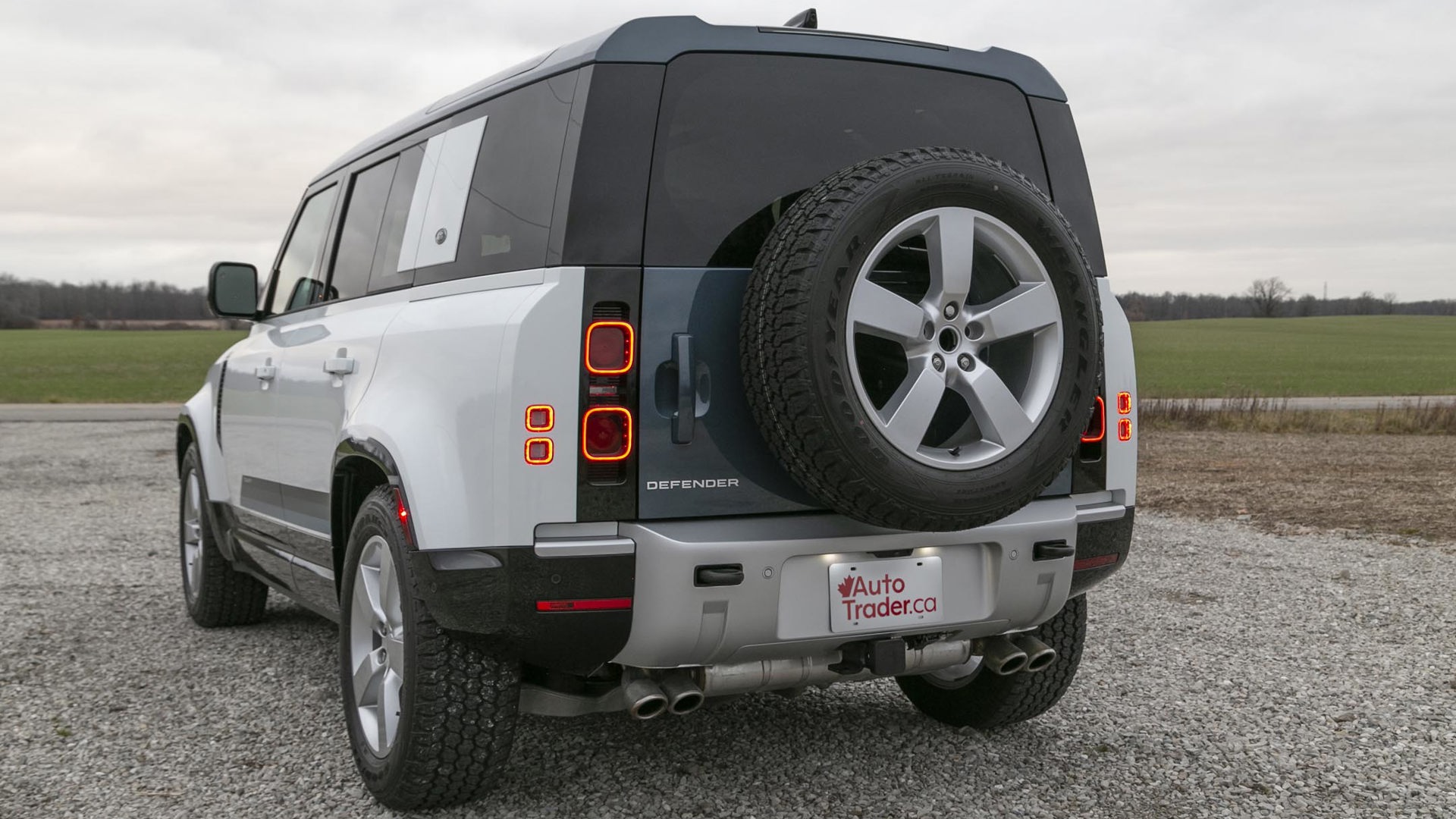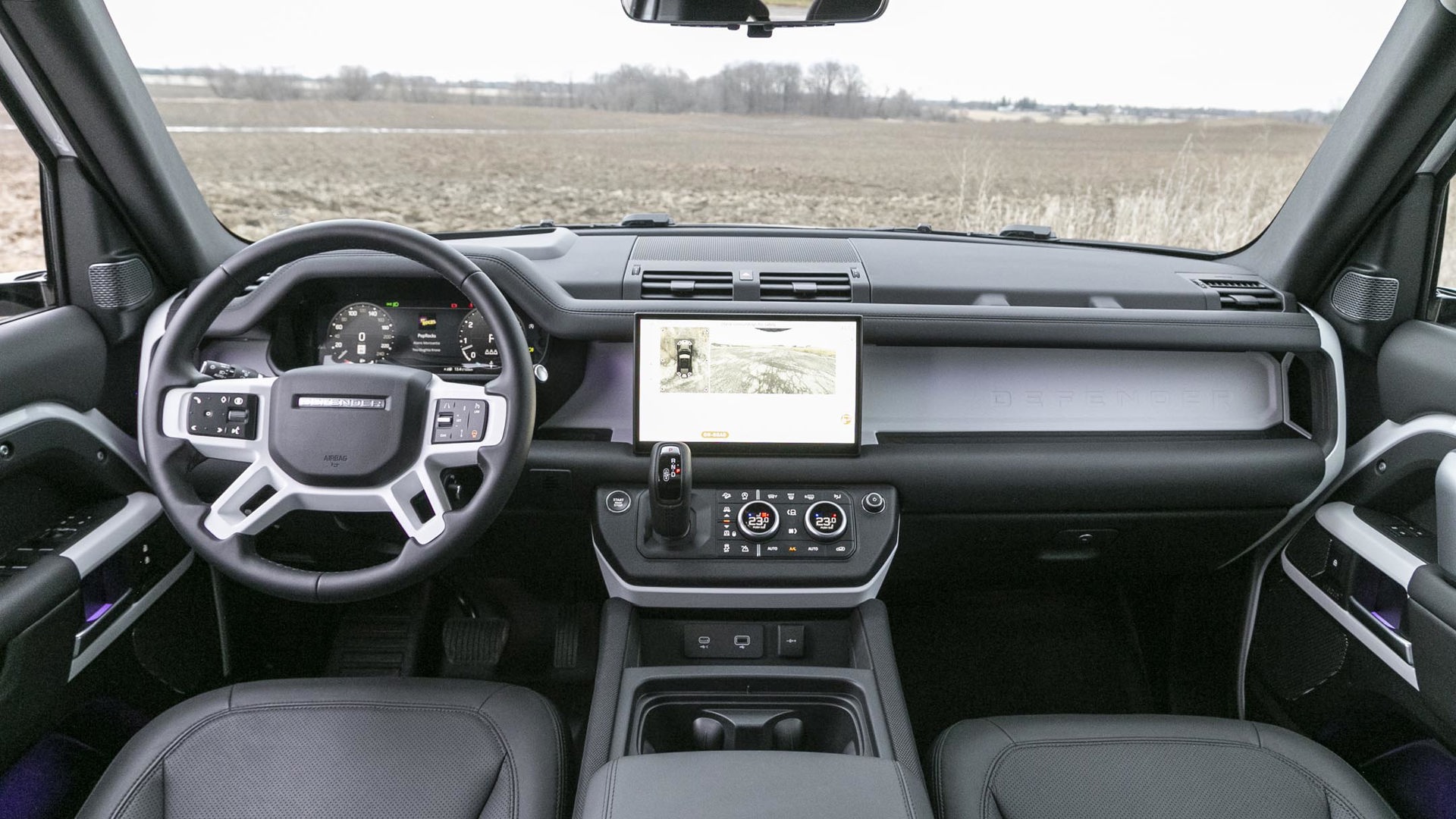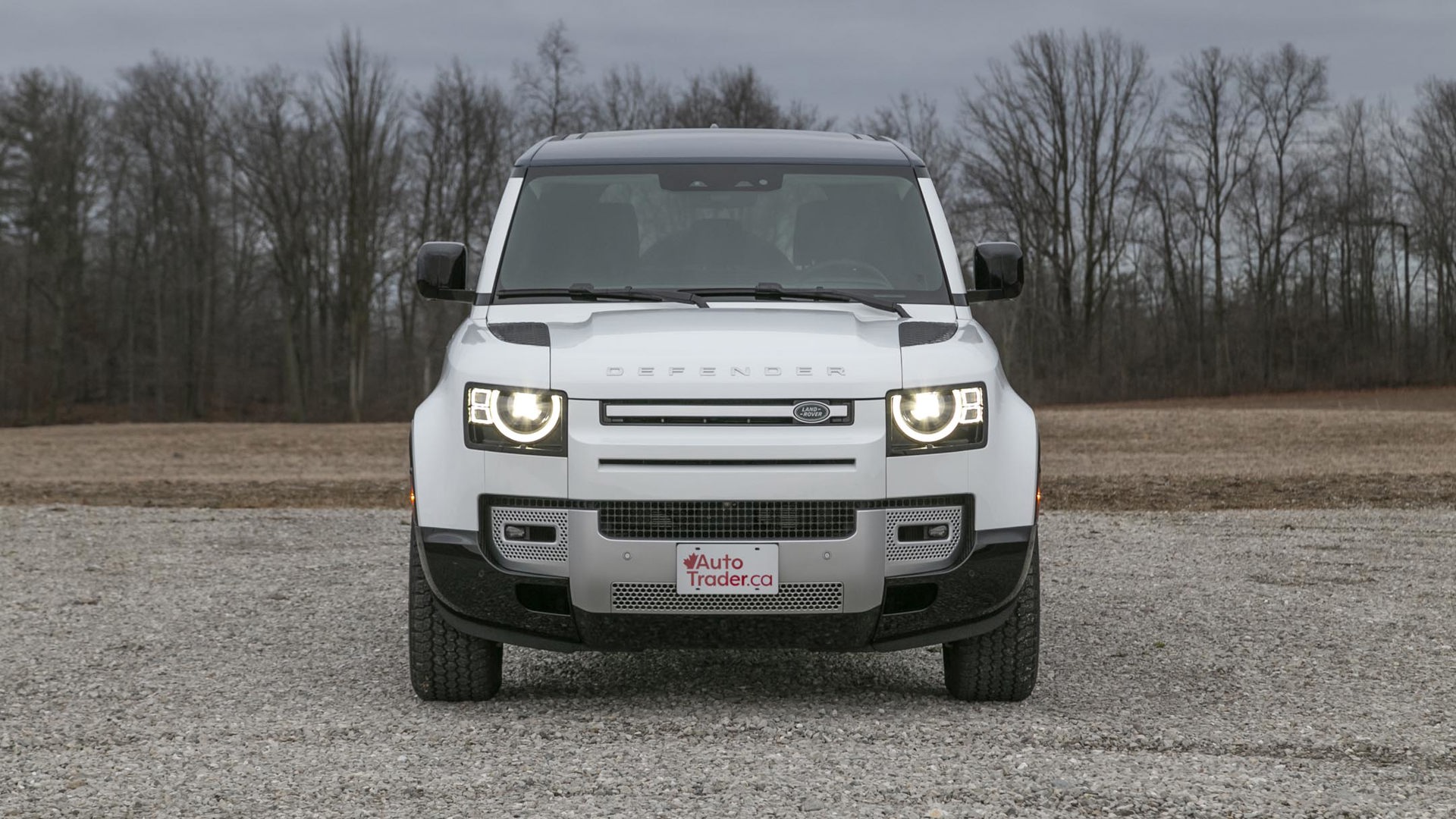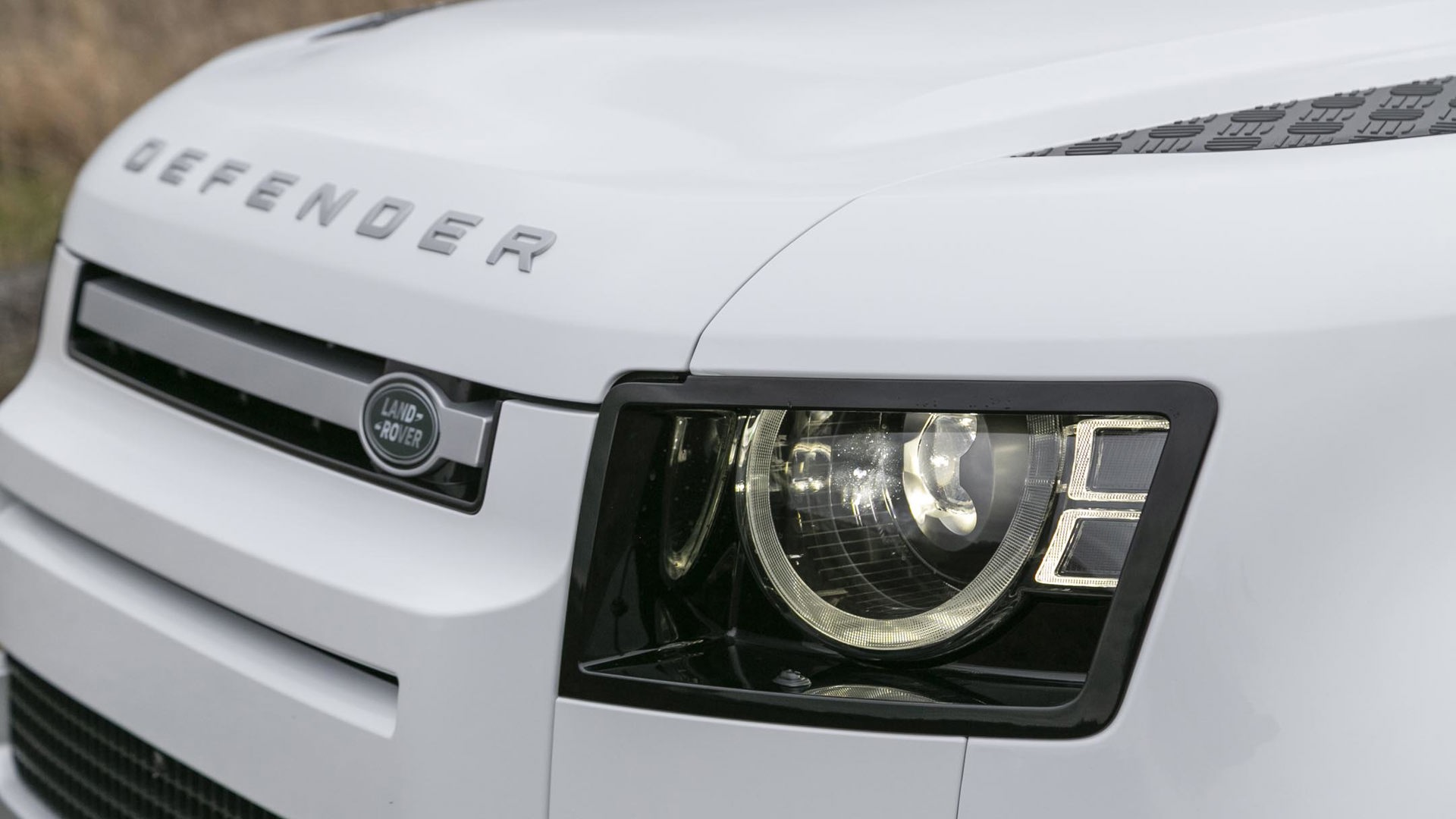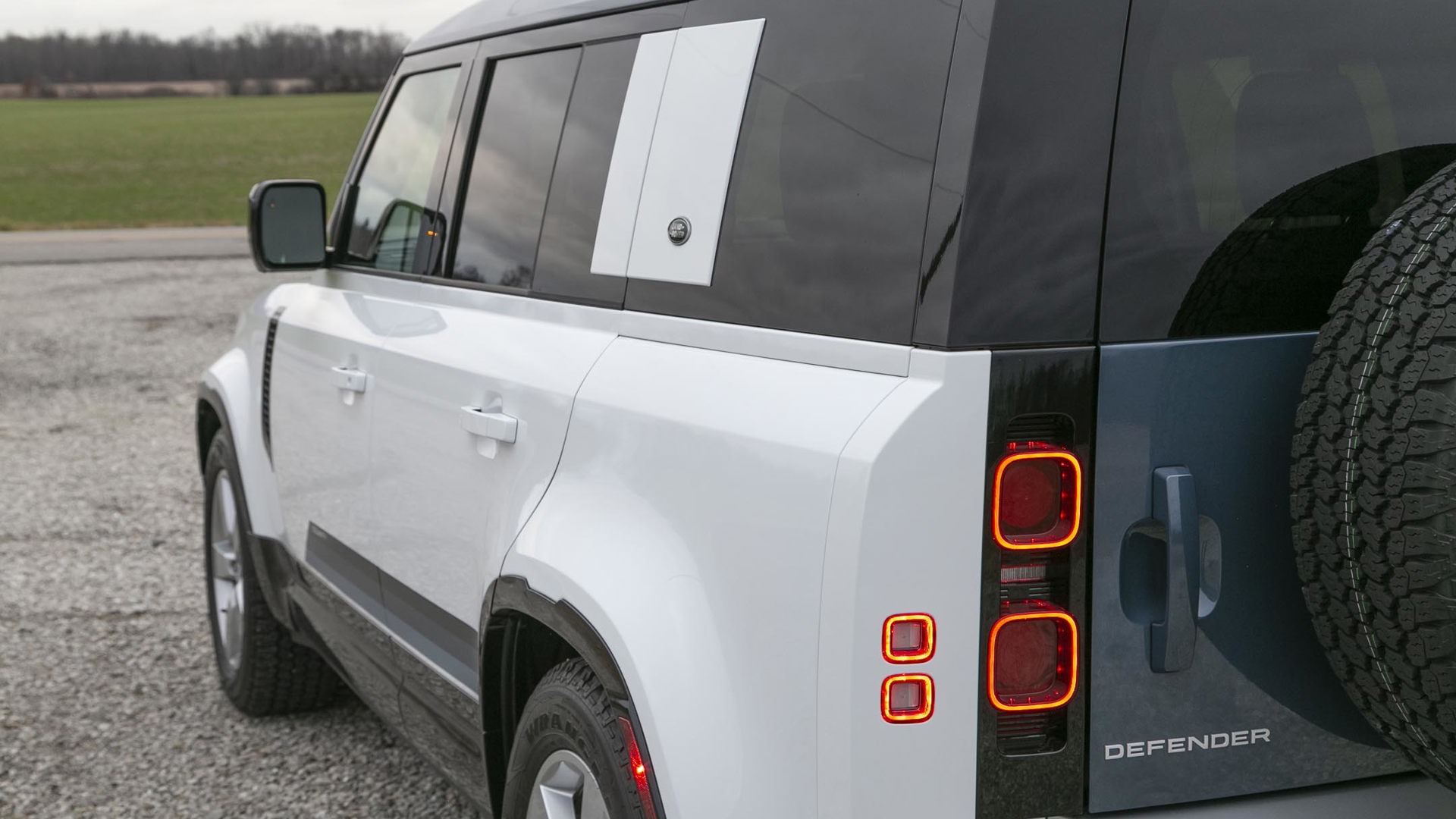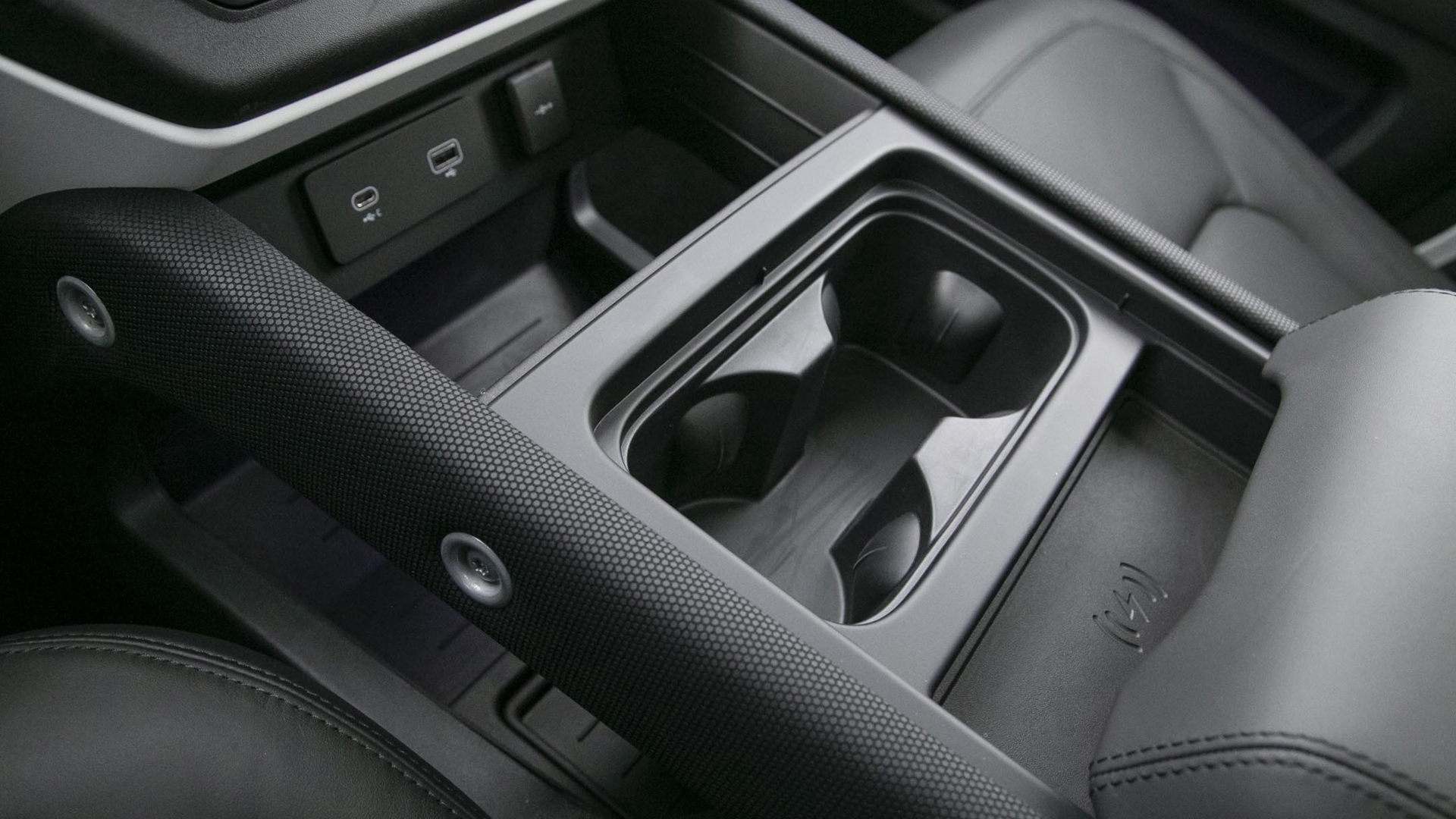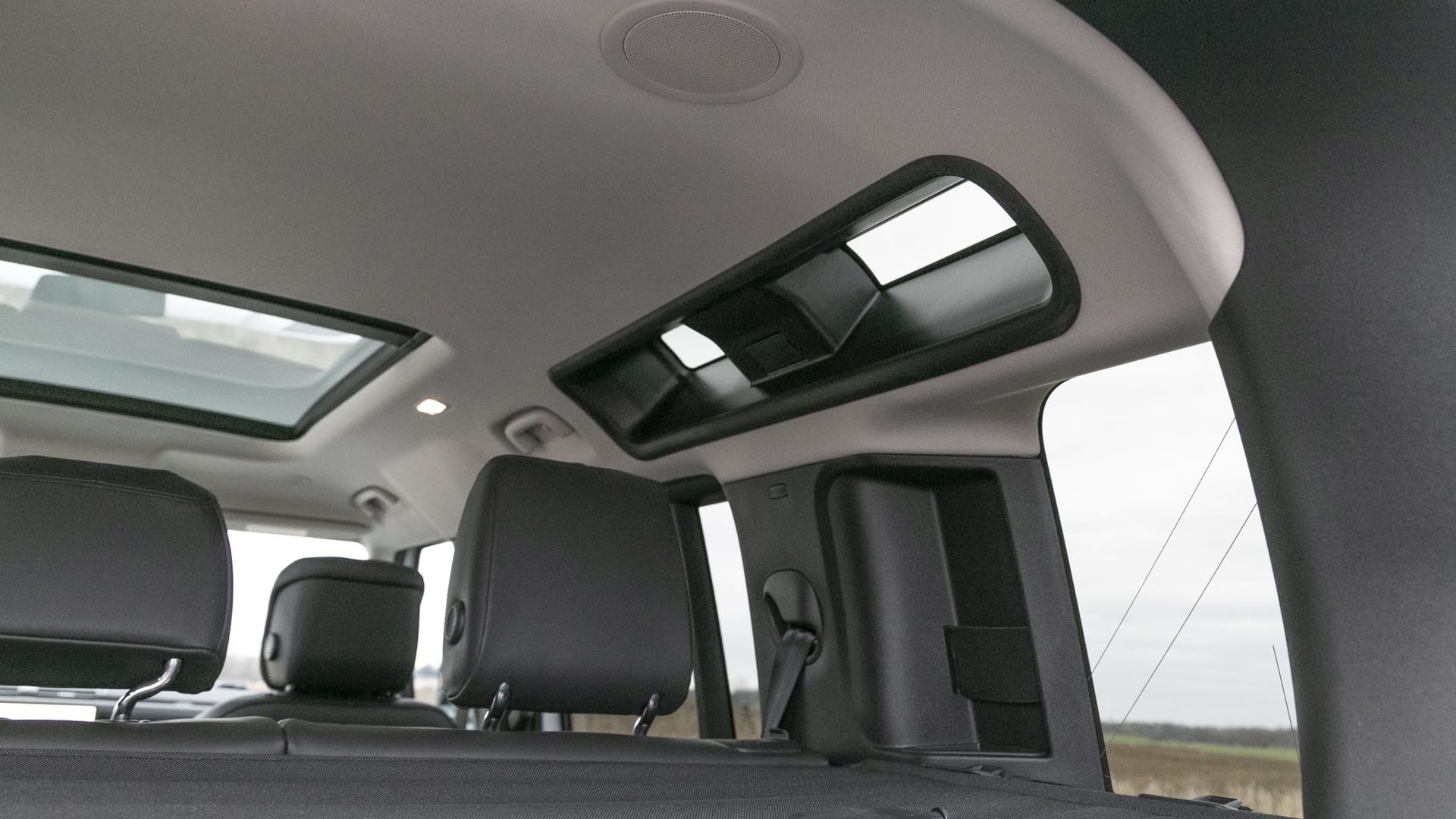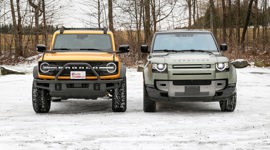 AutoTrader SCORE
AutoTrader SCORE
-
STYLING8/10
-
Safety9/10
-
PRACTICALITY9/10
-
USER-FRIENDLINESS9/10
-
FEATURES9/10
-
POWER8/10
-
COMFORT7/10
-
DRIVING FEEL7/10
-
FUEL ECONOMY5/10
-
VALUE6/10
We at AutoTrader have become fans of Land Rover’s Defender over the past few years.
We’ve driven the two-door Defender 90, the four-door 110, and the extended-length 130, and each time we’ve come away impressed by its style, not to mention its prowess both on- and off-road. You’ve got to hand it to Land Rover – the brand’s doing a heck of a job broadening the appeal of this brawny machine.
With the recent addition of the V8 to both the 110 and 130 variants, the time was right to circle back on this staff favourite to find out if big displacement makes it better. But after spending a week with the 2024 Defender 110 P500, it turns out that’s not entirely the case.
Power: 8/10
Jaguar and Land Rover have been using variations of this supercharged 5.0L V8 for several years in a number of different models, and it always makes for a lively, engaging ride. Here in the Defender 110, it dispenses 493 hp and 450 lb-ft of torque, which is enough to urge this 2,600-kg (5,732-lb) SUV that’s shaped like a shed to 100 km/h in about 5.5 seconds, according to the automaker. More importantly, it does so while bellowing a sensational roar.
While the V8’s roughly 100-hp bump over the six-cylinder might seem tempting, the package itself adds 320 kg (705 lb), plus both peak output arrives later than it does with the smaller engine. What’s more, the six-cylinder is paired with a neat mild hybrid system that helps add responsiveness that’s lacking here.
Fuel Economy: 5/10
The fuel penalty when picking this engine could be enough to second-guess the decision, too, with a consumption rate that’s about 2.0 L/100 km worse than the straight-six from the P400. Even if it’s not the added expenditure, it’s still inconvenient to stop and refuel more frequently.
As it sits, the V8 version tested here is rated to chug back premium-grade gas at a rate of 16.4 L/100 km in the city, which only improves to 12.7 on the highway. This week-long test that was mostly spent on the highway saw an overall average of 13.9 L/100 km.
Driving Feel: 7/10
The Defender’s on-road composure is one of its most surprising traits, especially considering how accomplished it is at tackling gnarly terrain when the pavement ends. Compared to other serious off-roaders like the Jeep Wrangler or Ford Bronco, this Land Rover offers more sure-footed handling, better body motion control, and – notably – more precise steering. Admittedly, those competitors are a lower benchmark, but the Land Rover feels like the costlier, more poised and polished machine that it is.
Even so, while the Defender fares well against the Wrangler or Bronco on-road, it’s not exactly a corner -carver. Adding more mass with V8 doesn’t help handling, either, and that bulk is always evident when throwing this big SUV around.
The way Land Rover has calibrated the V8’s throttle response and transmission is odd, too. There’s surprisingly little reaction to initial pedal depression followed by a neck-snapping wallop of it. The hair-trigger throttle was not something recalled from earlier experiences with the six-cylinder Defenders, and it’s odd that instead of a smooth wave of thrust the V8 behaves more like a little engine with a big turbocharger. This tester’s braking was similarly grabby, although it provided serious stopping power.
Comfort: 7/10
All the herky-jerky throttle and braking, coupled with a tall seating position that exaggerates body roll, can make passengers question the driver’s skill behind the wheel. What’s more, the V8 Defenders can’t ride on anything smaller than 20-inch wheels that tend to thwack over potholes. The available 22-inch alloys should probably be avoided unless you plan to drive exclusively on smooth roads.
Despite those big wheels, the adaptive suspension does good work softening the blow of whatever rough surfaces are being traversed, preventing occupants from being tossed and bounced around the way they are in a Wrangler or Bronco. Without the rooftop basket, A-pillar snorkel, and storage box found on other Defenders we’ve tested, this cabin was well insulated from wind and road noise – no small feat given its all-terrain tires, not to mention the aerodynamic properties of an outhouse.
The front seats are heated and ventilated and offer a comfy position; plus there’s plenty of room for heads, shoulders, and legs in the first and second rows.
Safety: 9/10
Land Rover decks the Defender out with all the advanced safety features it should in this day and age. There’s adaptive cruise control, automatic emergency braking, blind-spot monitoring, and lane-keeping assist, plus LED headlights with automatic high-beam control. The optional Cold Weather package on our tester included heated windshield washer nozzles, headlight washers, and an electrically-heated windshield, all of which can be a godsend in sloppy winter weather.
Features: 9/10
This tester was loaded with all kinds of luxury accoutrements, including an excellent stereo, onboard Wi-Fi, tri-zone climate control, head-up display, and a fridge in the central console. Those who plan to put the Defender’s considerable off-road skills to the test will appreciate its terrain response system that helps manage wheelspin, ride height, and throttle response in various off-road conditions. There’s also a system that senses the depth of water the Defender is fording, and an advanced hill descent control system, all of which helps make it surprisingly easy to get through some wild conditions.
User-Friendliness: 9/10
Those systems – as well as the rest of the Defender’s controls – are intuitive. The climate controls are operated by a pair of large dials that when pushed also allow seat temperature control. Those same dials can also select between the various terrain drive modes, which sounds like an awful lot for a couple of dials to manage, and yet it’s simple to figure out and doesn’t require endless hunting and pecking through menus in the infotainment system.
That system is also slick, with a straightforward operation via its 11.4-inch touchscreen. There’s wireless phone charging and wireless Apple CarPlay and Android Auto connectivity – although there were several times when the system wouldn’t respond to steering wheel button inputs, and randomly dropped the phone connection.
The Defender’s tall greenhouse allows for great outward views, but the pillars are thick enough to double as bridge supports and require a bit of neck-craning to see around them. The spare tire mounted to the back door doesn’t help matters, but the surround-view camera system works well when parking.
Practicality: 9/10
The Defender’s boxy shape is inherently practical. Its interior provides good space for occupants and a truly usable cargo hold that’ll hold 786 L of stuff behind the rear seats, or 1,875 L with them folded. A third row is available for those who need the extra passenger space, plus the larger Defender 130 offers even more space.
The cargo area is finished in a tough plastic diamond-plate-like pattern that makes it perfect for the kind of wet or muddy cargo an adventurous owner might toss in the back. Plus, the available external accessories – from side-mounted cargo boxes to ladders and robust roof-top racks and baskets – give buyers a lot of flexibility to build their Defender to best serve their needs. Meanwhile, towing capacity is unchanged at the same 3,500 kg (7,700 lb) as the six-cylinder Defender.
Styling: 8/10
Even after a few years on the road, the Defender’s relative rarity keeps Land Rover’s gnarliest machine looking good amidst a parking lot full of imitators from all sorts of automakers trying to get in on the off-road aesthetic. There’s just enough throwback to classic Land Rovers – like the fender-top tread plates, and the skylight windows in the back of the cabin – to maintain a family resemblance, yet it still looks contemporary.
This tester was fitted with the Country package that’s meant to recall its namesake from earlier generations. The roof on this white machine was painted blue, as was the rear door. The sides were dolled up with multi-tone blue stripes that seem better-suited to a nautical theme than one for off-road adventure.
Unfortunately, the P500 also gets a set of four protruding chrome tailpipes that look like cheap add-ons and, despite being nearly new, were already showing serious corrosion on this tester. Besides looking chintzy, these pipes are also susceptible to damage when off-roading, making them a questionable choice for the Defender.
The Defender’s interior is well done. Not unlike the Bronco or Wrangler, its rugged theme is evident in exposed hex screws and tough finishes. Even places like the steering wheel spokes that look like plastic are actually powder-coated metal, giving a more premium tactile experience. And while other off-road machines might offer leather trim, it’s nowhere near as luxurious as the buttery hides found here.
Value: 6/10
Buyers wanting a go-anywhere adventure machine that can also be left with the valet at a high-end hotel will be forced to pay a starting price of $116,000 for the Defender 110 SE P500 tested here. Optioned up like this one, the cost swelled to more than $130,000 before sales and luxury taxes were applied. A Ford Bronco Raptor also costs $116,000, and a V8-powered Jeep Wrangler 392 starts at an eye-watering $119,000. While those two offer even more serious off-road chops, they pale in sophistication and finishes.
The biggest hit to the P500’s perceived value is that a similarly specced Defender P400 with the inline six-cylinder looks the same, is just as capable off-road and when hauling people and stuff, and is arguably better to drive – yet it costs $12,000 to $15,000 less.
The Verdict
On one hand, Land Rover already makes some serious luxury and performance machines branded under the Range Rover lineup, while the Discovery sits in a comfortable middle-ground between posh and tough. That leaves the Defender to be the roughest, toughest, gnarliest offering in the lineup. There will be some shoppers who just have to have the 2024 Land Rover Defender P500 (or the spicier and costlier P525) because of the throaty V8; but without offering an appreciable performance improvement, there’s good reason to stick with a well-optioned P400 for its better driveability, efficiency, and savings.
| Engine Displacement | 5.0L |
|---|---|
| Engine Cylinders | Supercharged V8 |
| Peak Horsepower | 493 hp @ 6,000 rpm |
| Peak Torque | 450 lb-ft @ 2,500 rpm |
| Fuel Economy | 16.4 / 12.7 / 14.7 L/100 km cty/hwy/cmb |
| Cargo Space | 786 / 1,875 L rear seat up/down |
| Model Tested | 2024 Land Rover Defender 110 SE P500 |
| Base Price | $116,050 |
| A/C Tax | $100 |
| Destination Fee | $1,950 |
| Price as Tested | $132,230 |
|
Optional Equipment
$14,130 – Windsor leather, $600; Comfort and Convenience Package, $1,260; 3-zone climate control, $1,100; Air Quality Sensing, $100; Cabin Air Purification Plus, $450; Meridian Surround Sound, $600; Wi-Fi plan, $700; Black exposed recovery eyes, $250; Towing Package, $1,460; ClearSight review mirror, $650; Extended Leather upgrade, $1,500; County Exterior package, $900; Head-Up Display, $1,100; Body-coloured Spare Wheel Cover, $600; Domestic Plug Socket, $150; Tasman Blue contrast roof, $1,050; Roustec Veneer, $600; Cross car beam in white powder coat, $200; Rear seat heater, $500; 18-way climate front seats, $300; Land Rover Hand Over Pack, $60
|
|

